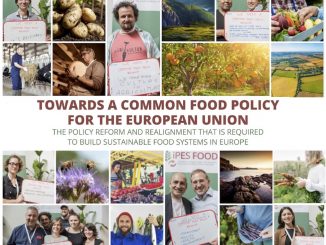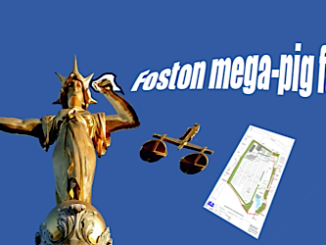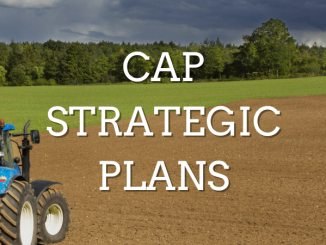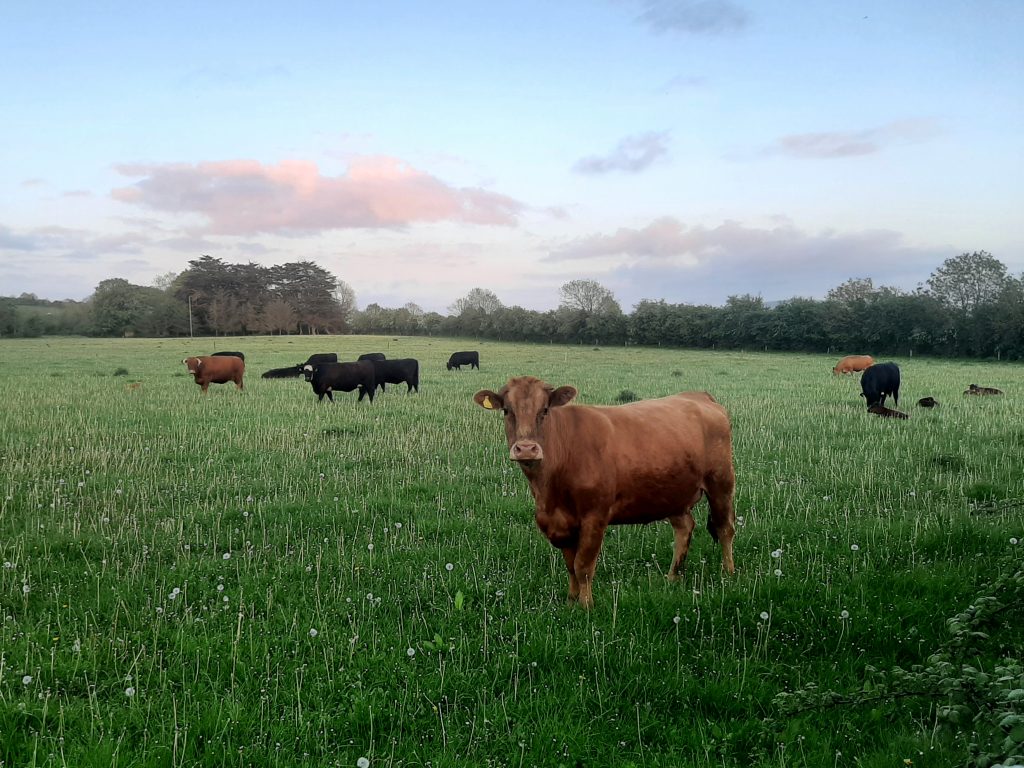
Part two of four from Stuart Meikle on Ireland, food security and feed(ing) the world delves into the relationship Britain and Ireland have with each other -the two main islands of the archipelago referred to in the article’s title. Part one (see below) focused on Ireland, food security and nitrogen supply. Here, trade, animal feed, meats, durable forms of diary all feature.
Although Irish agriculture is dominated by its exports of dairy and beef, the term export relates to trade that crosses political borders, not planetary ones. Although it is common to hear claims that it is a major global exporter of dairy products and beef, such a claim glosses over the fact that much of the produce feeds a very close, highly urbanised neighbour. Much of the rest is also internal EU trade.
When it comes to GHG emissions leakage, there is a real possibility that urban England may soon have to buy food from higher emitting countries: Ireland is likely to contract its ruminant farming sector as part of a plan to reduce overall (absolute) emissions. It will be surprising if the issue of carbon leakage is not soon fully addressed with agricultural products.
Ireland’s Primary Food Export Destinations
For the purposes of clarity, in 2018, the UK imported around 21% of Irish butter exports, 50% of the cheese, and 58% of the beef [all the data in this paper is pre-Brexit 2018 data from the FAO]. This was 54% of UK butter imports [circa seven times that of Denmark or France], 27% of UK (cow-milk) cheese imports [more than France and Italy combined], and 68% of UK beef imports {Brazil is next at 8%].
This equates to about 25%, 17% and 20% of domestic UK demand respectively. Alternatively expressed, Ireland supplies butter, cheese and beef to around 17, 11 and 13 million UK residents respectively. Ireland may have major nitrogen-complex issues to resolve, but it is the local supplier of nutrient-dense foods to its neighbour. Also, it often does this by importing food-processing ‘waste’ streams from UK processors.
In addition to feeding the UK, most of the rest of Irish exports go to feed close-by western Europeans.
In total, the EU imported 65%, 27% and 39% of Ireland’s butter, cheese and beef exports respectively. Germany took 15% of Irish butter exports and the Netherlands a third (likely includes reexports to the EU). Cheese exports went across the EU. France with 10% of Irish beef exports was next to the UK.
Thus, taking the pre-Brexit EU of 2018 (including the UK), the export-to-EU totals are 86% for butter, 74% for cheese, and 97% for beef. Ireland is, de facto, a local supplier of food to the EU and the UK.
In a planetary context, political boundaries aside, this is local trade and Ireland is not a ‘global player’.
Other meats to the United Kingdom
An outsiders view of Ireland is one of a pastoral country. It has nonetheless built up its mainly indoor pig and poultry industries. The former has now outgrown the Irish market’s need [of about 30kg per person]. In 2018 the domestic market required only 145,000 tonnes of 303,000 tonnes {48%] of the pigmeat produced in the Republic. Over 110,000 tonnes of pigmeat were exported to the UK. In addition, about half-a-million pigs crossed into Northern Ireland live. The latter reflects a significant within-industry trade between Ireland and the UK.
The pig sector plays a role in supplying the UK market. It is difficult to specify exactly how much as there is significant within-Ireland trade of pigmeat to the extent that exports from the south nearly matched the Republic’s total production in 2018. The 110,000 tonnes above will include pigmeat traded across the Border. Nearly 90,000 tonnes were exported ex-EU and UK to around 25 countries. Of that 80% went to the Far East to countries including China, Japan, the Philippines and South Korea.
For pigmeat, as a guesstimate, Ireland probably supplies about 10% of the UK population’s needs.
In contrast to pigmeat, inter-archipelago trade in chicken meat is far less. The 50,000 tonnes exported from the Republic of Ireland in 2018 would have supplied the needs for about 1.5 million UK citizens.
As the UK is self-sufficient in sheep meat production, there is little trade between Ireland and the UK relative to total UK demand. However, it still accounted for just over 20% of Ireland’s 50,000 tonnes of exports in 2018. France was the only significant market taking one-third of Irish exports. In total, Ireland exported over 75% of its production. Domestic Irish consumption was about 3.5kg per head, or 15% that of beef. Sheep meat consumption was only a third of what it had been 50 years before.
Inter-Archipelago Animal Feed Trade
The Republic of Ireland’s feed imports are frequently mentioned in debates around sustainability. It often revolves around just how much ‘food’ does Ireland import to feed its livestock farming sectors. Given the scale of animal feed imports and the dominant role producing feed has in the Irish tillage sector, this warrants its own section within this series. Nonetheless, to a degree, Irish feed imports and feed growing relate directly to feeding a highly urbanized island within the same archipelago.
There is inter-island trade in animal feeds from the UK to Ireland. In 2018 one million tonnes of animal feeds were imported from the UK. It should be noted that 400,000 tonnes of animal feeds were (re-)exported to the UK, most likely to Northern Ireland. A large part of the imports was food processing by-products including ‘wastes’, bran, brewers’ grains and rapeseed meal. Also 300,000 tonnes of barley were imported from the UK, some of which may have been malted in Ireland rather than fed.
Animal feed imports from the UK also included non-indigenous-to-the-UK commodities like maize and soybean meal [in 2018 nearly 40% of all the feed imported from the UK were of non-UK origin]. The Irish use of animal feeds from all sources will be discussed more fully in Part Three of this article series.
Ireland’s Food Imports from the Archipelago
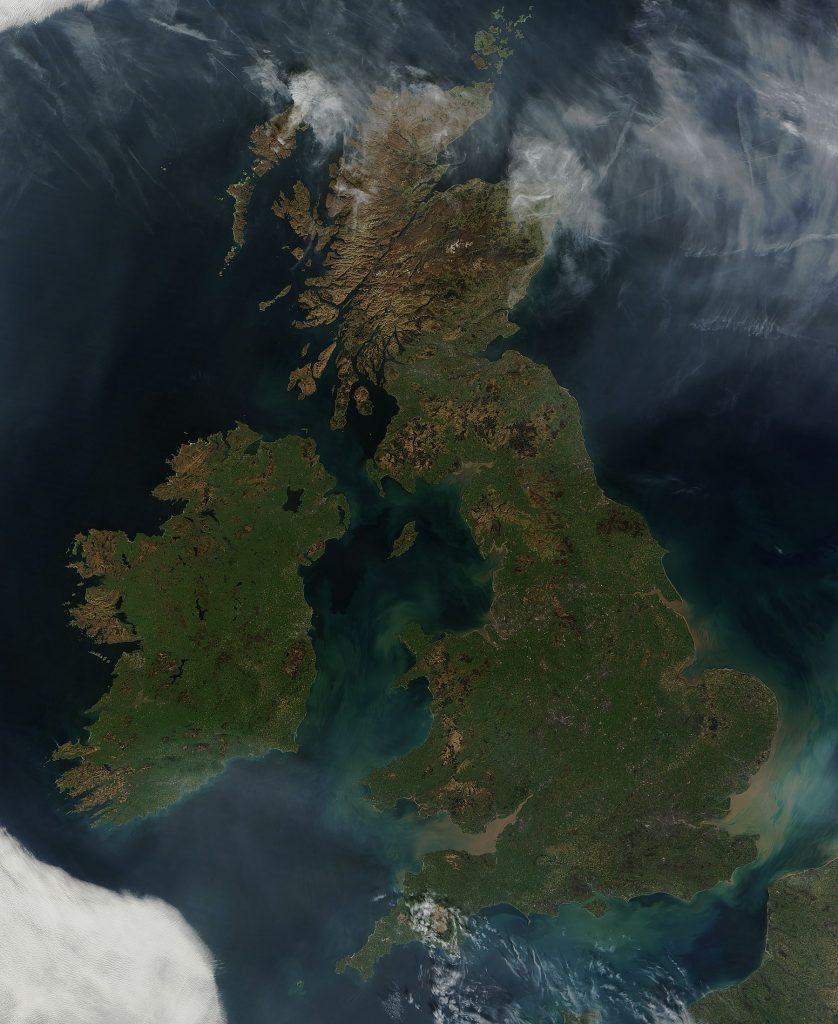
There has always been inter-island trade within the archipelago. Ireland’s dairy export mix of butter and hard cheese was due to their reduced perishability in times past and, thus, ease of transport. It also supplied store cattle to the UK for finishing. They would have flowed into regions like East Anglia where they would also have played a pre-fertilizer, soil-fertility building role on its arable-crop farms.
In recent years, Ireland has specialized towards dairy and beef. Its dairy expansion has been into milk powder rather than UK destined products. Meanwhile, often driven by the supermarkets supply-chain demands, Irish consumers have become more reliant on imported foods, often supplied from the UK.
Nearly 200,000 tonnes of wheat were imported from the UK [about 40% of imports], some of which would have been for flour. Ireland relied nearly 100% on the UK for its imports of milled wheat flour.
It is probable that only 5% of flour used in Ireland is Irish. If that is to change, consumer tastes will have to move to more ‘rustic’, less-refined, products from flour milled from grains suited to the Irish climate. It is not simply a case of growing wheat in Ireland to substitute for flour and wheat imports.
Other imports to Ireland from the UK included sugar [c.75% of a 200,000 tonnes total] and potatoes [c.50% of 200,000 tonnes]. Of Ireland’s 300,000 tonnes of vegetable oil imports, close to 20% were of UK rapeseed origin. Another 10% would have been supplied from third party producers via the UK.
About 30% of the 175,000 tonnes of apples imported by Ireland were supplied via or grown in the UK. With exports of c. 30,000 tonnes in 2018, Ireland was a significant supplier of mushrooms to the UK.
Finally, there are also significant processed food trade flows between Ireland and the UK. Nearly half-a-billion litres of beer was traded, two-thirds of which went from Ireland to the UK. Cider is an Irish export [c.75,000 litres] despite its lack of a large indigenous apple growing sector [c. 13.5 million kilos of concentrated apple juice was imported]. About 400 million litres of non-alcoholic beverages were traded with about two-thirds of such being imported into Ireland [about 55 litres per person per year].
Ice cream and yogurt imports were both about 50,000 tonnes [c.10kg per person] while there is clearly cross-border movement of other dairy products. Confectionary travelled both ways. Ireland imported about 50,000 tonnes [again, about 10kg per person] and it exported a similar quantity. There was also another c.250,000 tonnes of food processing related trade, about 70% of which were imports into Ireland. The imports likely included pre-prepared in-store bakery products for the supermarkets.
Ireland and Archipelago Self-Sufficiency
Part Four of this series will focus on Ireland’s own food security. Here the focus is on Ireland’s role as a supplier to the more urban populations on the neighbouring islands under the jurisdiction of the UK.
Ireland’s key food-supply contributions are as nutrient dense butter, cheese and beef. These are the products that its pastoral farming systems evolved to produce. This is unlikely to change although the industry does swiftly need to minimize its reliance on imported nitrogen fertilizer as this dependence undermine the grow-your-own food security arguments for the existence of Irish grass-based farming.
Farming systems innovation may yet prove that that nitrogen fertilizer use was largely unnecessary.
To place the butter, cheese, beef situation in context, in 2018 the archipelago was 212%, 86% and 118% self sufficient respectively. The figure for butter is high and reflects Irish production. It is 50% higher than in the UK where dairy has to, necessarily, be focused on fresh milk and short-life products.
In theory, in a food crisis, the milk fat produced in Ireland could be used within the likes of ice cream where lower value products have been based on vegetable fats and not cream itself. It could also rectify the cheese archipelago supply shortfall, but that itself will be due to the consumer’s liking for a diversity of continental cheeses rather than the milk-fat available to make the cheese domestically.
As stated earlier, Ireland supplies butter, cheese and beef to around 17, 11 and 13 million UK residents respectively. Meanwhile most of the rest goes to supply EU partner countries in north-west Europe.
Food security is, however, more than about history. The numbers relate to the agricultural systems in use at the time. Where the systems are reliant on imported fertilizer, how sustainable are they? How secure is the food supply produced? Likewise, if feedstuffs are grown with imported fertilizers or Irish production relies upon imported feeds? True food security has to evaluate the sustainability of the underlying production system and not trade flows alone. And that sustainability has to consider all the environmental factors, not to mention the economic viability of the farming and rural communities.
Agricultural system change is inevitable in the coming decade and deducing what future systems will look like is important as it is they that will provide future food security, not those of the recent past.
More
Nitrogen – Just Fix it! CAP’s Nature & Rotation Rules Under Threat
Food Security versus Sustainability in Europe during the war in Ukraine



